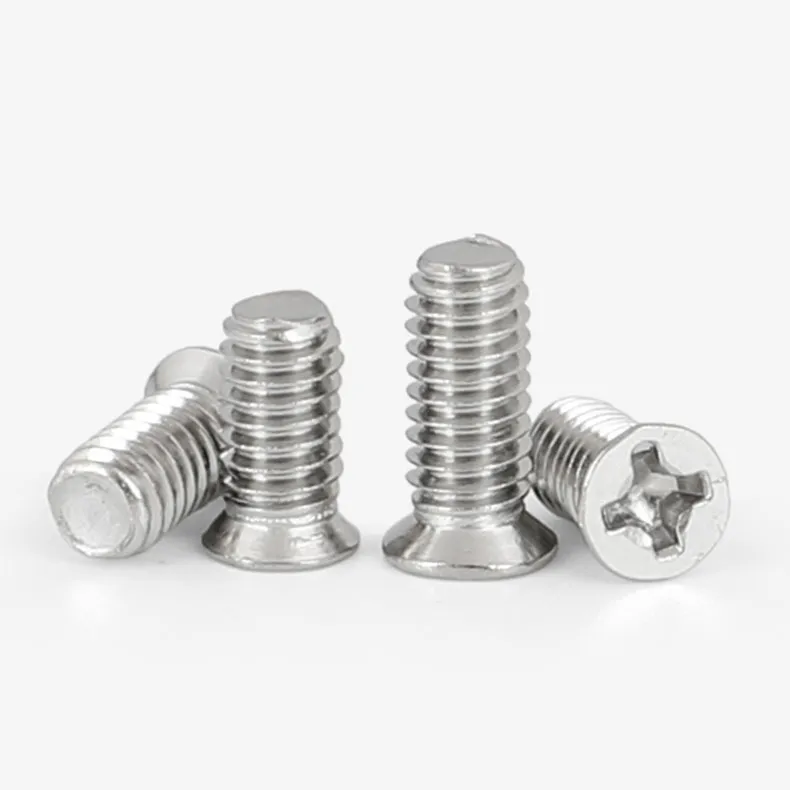

Self-Tapping Screws Designed for Use with Hardened Steel Applications and Materials
ное. . 08, 2024 01:36 Back to list
Self-Tapping Screws Designed for Use with Hardened Steel Applications and Materials
Self-Tapping Screws for Hardened Steel A Comprehensive Guide
When it comes to fastening components in industrial applications, the choice of screws is critical—especially when dealing with hardened steel. Self-tapping screws have emerged as a favored option for securely fastening components without pre-drilling. This article will explore the characteristics of self-tapping screws, their advantages and disadvantages, and best practices for using them on hardened steel surfaces.
What are Self-Tapping Screws?
Self-tapping screws are designed to tap their own hole as they are driven into the material. Unlike traditional screws, which require a pilot hole, self-tapping screws create their own thread within the base material. This unique characteristic makes them incredibly efficient for various applications, especially in metalworking.
Characteristics of Self-Tapping Screws
Self-tapping screws are typically made from durable materials capable of withstanding the stresses of fastening hard substrates. They come in various designs with features that enhance their performance
1. Thread Design The thread design is crucial. There are two common types coarse thread for softer materials and fine thread for harder materials, such as hardened steel. The right thread design ensures that the screw can properly engage with the material, providing a secure hold.
2. Tip Shape Self-tapping screws can have different tip designs, such as slotted, pointed, or cutting tips, each tailored for specific applications. A pointed tip is often used for softer materials, while cutting tips are better suited for harder surfaces.
3. Material and Coating The material of the screw itself is vital. Options typically include stainless steel, carbon steel, or specialized alloys. Applying coatings like zinc or nickel can enhance corrosion resistance, which is especially important in environments where moisture or chemicals are present.
Advantages of Using Self-Tapping Screws in Hardened Steel
1. Efficiency One of the primary benefits of self-tapping screws is that they eliminate the need for a pre-drilled hole, which speeds up the assembly process considerably. This is particularly advantageous in manufacturing settings where time is of the essence.
2. Strength Self-tapping screws designed for hardened steel provide a strong bond, capable of withstanding significant loads. When selected and installed correctly, they can ensure long-lasting durability.
3. Versatility These screws can be used in various applications, including automotive, aerospace, and manufacturing. They are suitable for a range of materials and environments, making them a versatile tool in any assembly process.
self tapping screws for hardened steel

Disadvantages of Self-Tapping Screws
Despite their advantages, self-tapping screws are not without drawbacks.
1. Potential for Damage While self-tapping screws are designed to handle hard materials, overtightening or improper installation can result in stripped threads or damage to the base material. It is crucial to use the right torque settings and installation methods.
2. Material Limitations While they work well with many types of materials, not all self-tapping screws are suitable for every type of hardened steel. It is essential to select screws specifically designed for optimal performance with hardened materials.
3. Less Reusability Once a self-tapping screw is inserted, its threads may deform, making it less effective if removed and reinserted. This can be a consideration in applications where maintenance is frequent.
Best Practices for Using Self-Tapping Screws on Hardened Steel
1. Select the Right Screw Choose a self-tapping screw specifically rated for hardened steel. Check the manufacturer's specifications regarding tensile strength and torque ratings.
2. Use Proper Tools Employ adequate tools for installation, including a power screwdriver with torque settings to prevent overtightening.
3. Surface Preparation Clean the surface of the hardened steel to ensure that no debris interferes with the screw insertion. This can help maintain the integrity of the fastening.
4. Test and Adjust Test the screw in a small or inconspicuous area before full installation to verify compatibility and suitability for your specific application.
Conclusion
Self-tapping screws offer a reliable fastening solution for hardened steel applications, provided that they are chosen and installed correctly. With their unique design and operational efficiency, they serve as a valuable tool in numerous industries. By adhering to best practices and understanding the characteristics of these screws, users can achieve optimal performance and durability in their fastening applications.
Latest news
-
Hot Dip Galvanized Bolts-About LongZe|High Strength, Corrosion Resistance
NewsJul.30,2025
-
High-Strength Hot Dip Galvanized Bolts - Hebei Longze | Corrosion Resistance, Customization
NewsJul.30,2025
-
Hot Dip Galvanized Bolts-Hebei Longze|Corrosion Resistance&High Strength
NewsJul.30,2025
-
High-Strength Hot-Dip Galvanized Bolts-Hebei Longze|Corrosion Resistance&High Strength
NewsJul.30,2025
-
Hot Dip Galvanized Bolts-Hebei Longze|Corrosion Resistance&High Strength
NewsJul.30,2025
-
Hot Dip Galvanized Bolts - Hebei Longze | Corrosion Resistance, High Strength
NewsJul.30,2025

